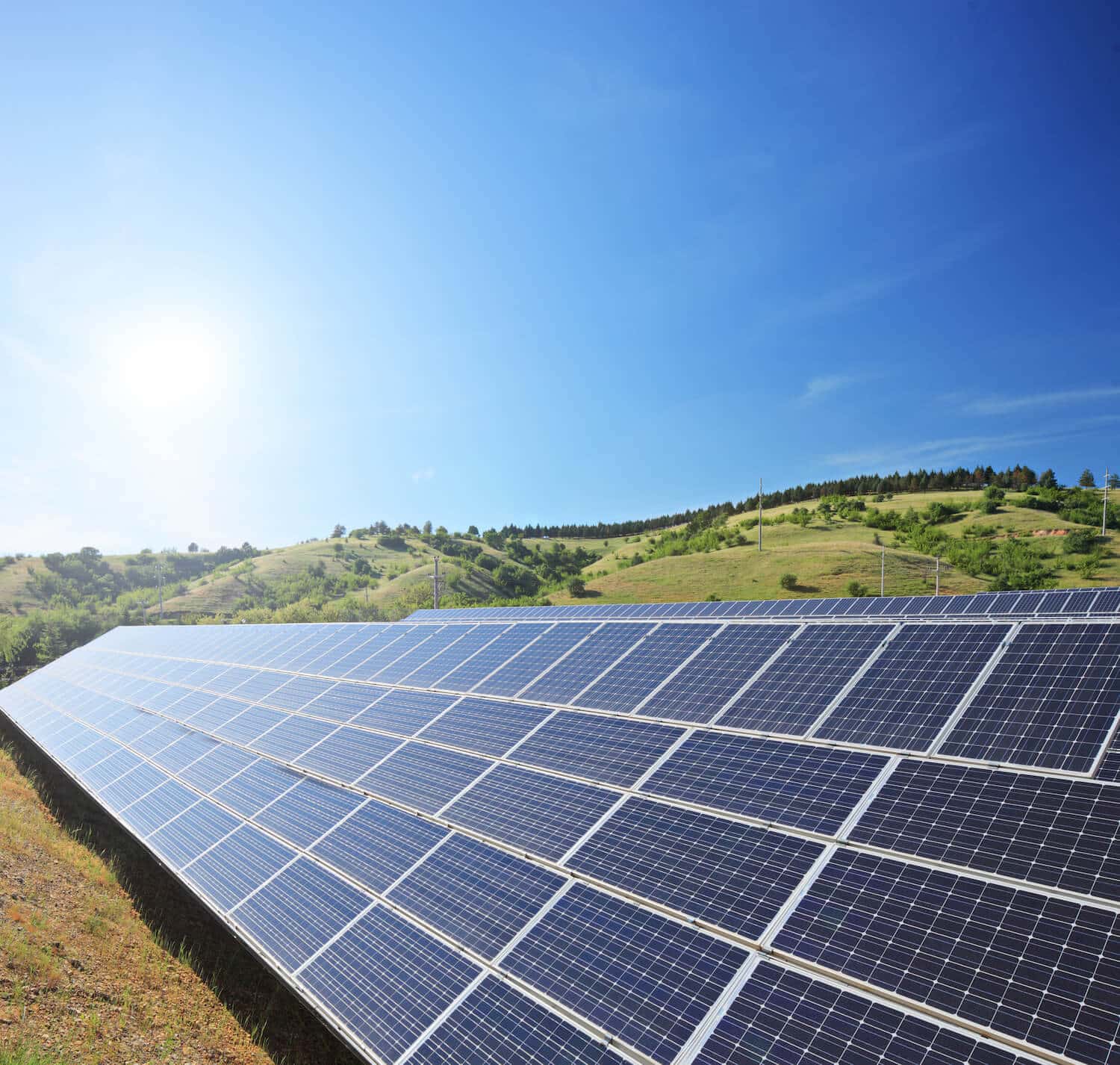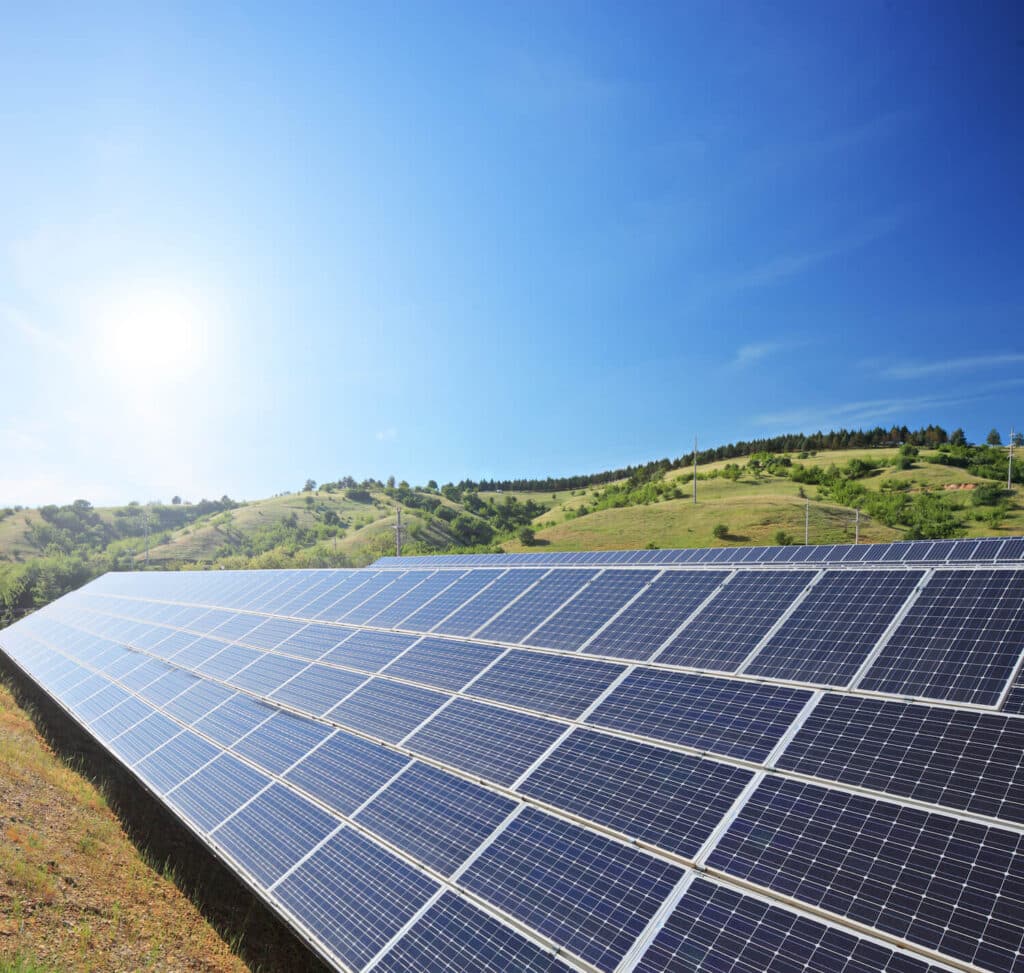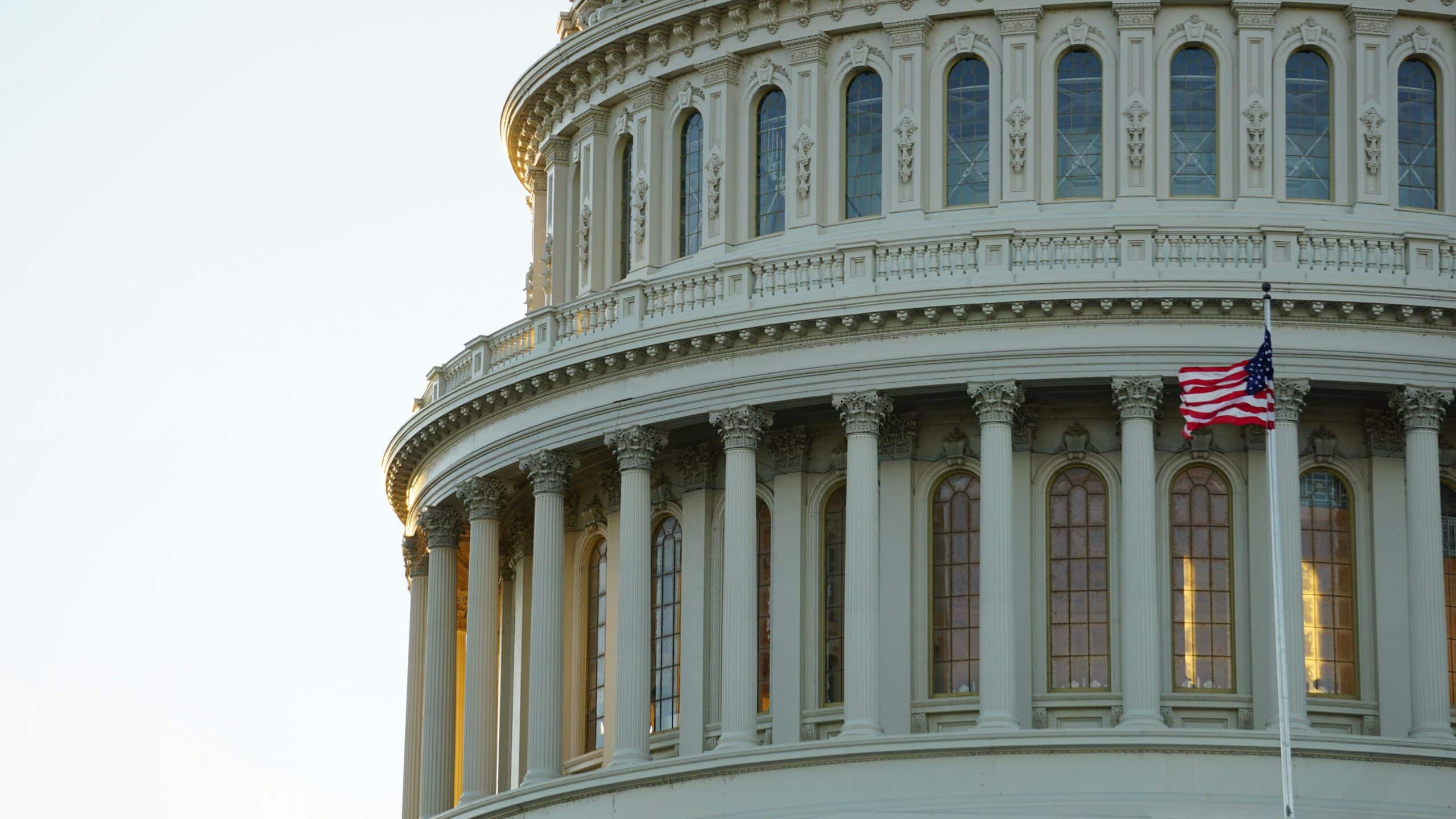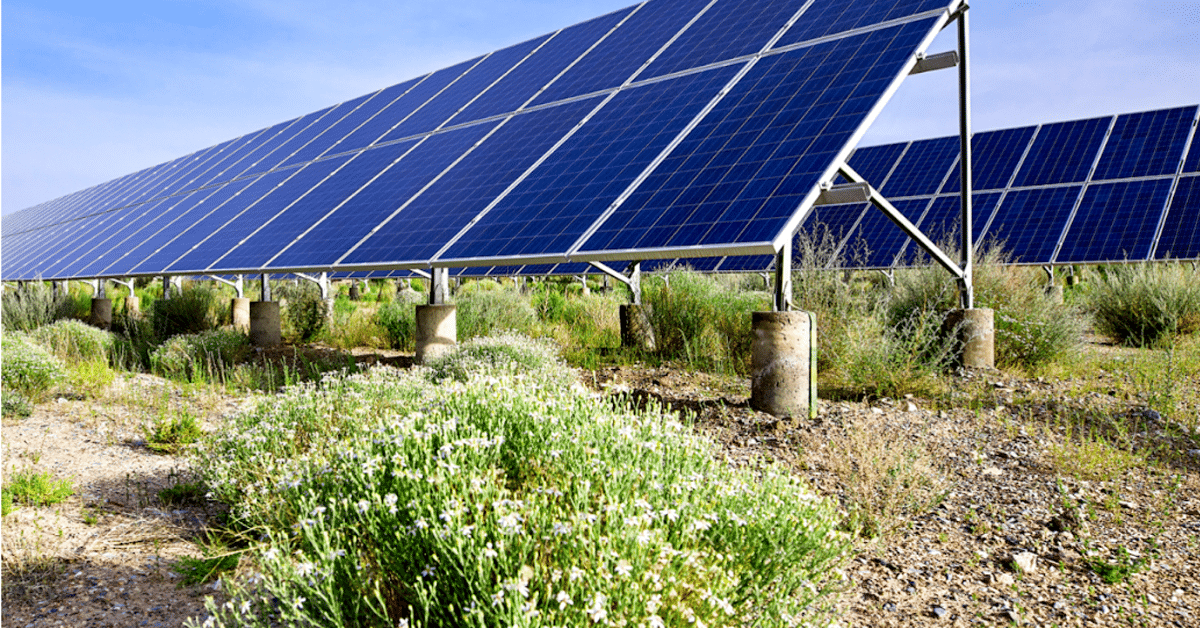POSTED
February 2, 2024
What Does a Solar Farm Licensing and Permitting Process Involve?
As we march towards a future powered by clean energy, solar farms stand out as a tech-savvy solution to our power needs. They are a smart choice for investors looking to grow their money, generate passive income, and mix up their investment portfolios.

What Does a Solar Farm Licensing and Permitting Process Involve?

Picture this: a world where your investments grow your wealth AND contribute to a greener planet. Solar farm investments provide financial gain and a positive environmental impact.
Believe it or not, understanding solar farm permitting unlocks new opportunities for accredited investors like you.
As we march towards a future powered by clean energy, solar farms stand out as a tech-savvy solution to our power needs. They are a smart choice for investors looking to grow their money, generate passive income, and mix up their investment portfolios.
You can make money and make a difference while doing so. But as an accredited investor, why should you care about the licensing and permitting process behind solar farms?
Think of it as the backstage pass to a rock concert. You want to see what’s happening behind the scenes to know if the show is going as smoothly as it seems. Similarly, understanding solar farm regulations is like having a front-row seat to the future of energy investing. It’s part of the fun!
Overview of the Licensing Process
Solar farm development involves understanding the intricate permitting process. Here are some pieces you’ll benefit from knowing about as you consider investing.

The Federal Checkpoint: EPA and DOE Approval
On the federal level, solar projects need the nod from agencies like the Environmental Protection Agency (EPA) and the Department of Energy (DOE). These agencies ensure solar farms follow environmental and energy guidelines and standards.
State and Local Permits: The Local Landscape Matters
State and local permits are the next step. The requirements vary based on where the solar farm sets up shop. It is important to note that the regulatory dialect may change slightly from area to area.
Environmental Licenses: A Commitment to Sustainability
Environmental licenses play a crucial role in solar farm investments. They signify a commitment to sustainable practices. These licenses ensure solar farms operate with minimal environmental impact and reinforce the green mission.
The Regulatory Tapestry: Compliance is Key
Amidst the paperwork and permits, one word stands out: compliance. Also known as “following the rules,” whatever they may be. Failure to comply jeopardizes the project and leads to legal trouble.
How Shasta Power Smoothly Navigates Permitting Systems
Here is a step-by-step roadmap for how our team works through the permitting process of a solar project in the background. Our clear and structured approach is for investors who appreciate a well-defined plan.

Step 1: Pick the Right Spot
At this stage, we assess potential properties to see if they’re suitable for a solar farm. We look at sunlight exposure, land quality, and its proximity to existing infrastructure. This step involves detailed surveys, feasibility studies, and conversations with the local community.
Stage 2: Craft the Blueprint
Once we find the right spot, it’s time to plan things out. We create a blueprint for the solar farm, figuring out where to place panels, how to set up infrastructure, and ways to protect the environment. We start the permit process, getting approvals from the federal, state, and local authorities. This stage requires attention to detail and good communication with the rule-making bodies.
Stage 3: Ensure Positive Impact
It’s important to understand how our project might affect the environment. This stage involves a detailed look at consequences for wildlife, water usage, and habitat preservation. This will require help from environmental experts to address concerns and get the necessary approvals.
Stage 4: Talk to the Community
This step is all about being open and listening. We have to talk to the people in the area to address their concerns and get their feedback, generally though town hall style meetings, or during public comments at permitting hearings. This is good for the community and builds a positive, trusting relationship. Challenges may pop up as people have different opinions, so we need to handle things diplomatically.
Stage 5: Face the Scrutiny
Now comes the tough part. Our project goes through a deep check by federal, state, and local agencies. They ensure we follow all the rules about the environment and energy. There might be delays and challenges here, so staying updated and talking to these agencies is key.
Stage 6: Build It Right
Once we get the green light, it’s time to build. We need building permits for construction to ensure everything is safe and follows the design. Dealing with construction issues can be tricky, but we manage them closely.
Stage 7: Sell the Project
Shasta Power employs a strategic approach to maximize returns for its investors. The company typically sells the project to a developer or management company either before or after construction, seizing the opportunity to cash in on the appreciated value. This astute maneuver ensures a lucrative return for investors and aligns to secure financial growth within a relatively short timeframe.
By following this approach, Shasta Power delivers an impressive 35% target return on investment within 5-6 years. This strategy underscores the company’s commitment to financial prudence and investor success, making their projects environmentally conscious and financially rewarding.
Navigating Regulatory Hurdles: Solutions for Solar Investors
Let’s dive into the concerns that might worry investors when going in on a solar farm. We’ll talk about common challenges and, more importantly, how we tackle them.

Environmental Impact: The Necessary Hurdle
The environmental impact assessment—a detailed look at how the solar farm might affect nature—may concern investors. It’s crucial, but it can cause delays.
The solution? We get ahead of it, working closely with environmental experts and regulators. We create solid plans to manage environmental impacts, showing our commitment to green practices. This way, we meet regulations and boost environmental credentials from the get-go.
Community Opposition: Turning No into Yes
Another challenge is community opposition. Locals need to be on board with the project. The key is to communicate openly, honestly, and transparently. Engage with the community early on, listen to their concerns, and use their feedback to shape your plans. We always assume the community members are thoughtful participants, despite the temptation to believe some negative pop-culture portrayals of public commenters. We aim to educate them about the project’s benefits through public forums and possibly workshops. Show them how the solar farm can bring jobs and contribute to local development. Turning opposition into collaboration is not just a solution; it’s an opportunity to showcase our project’s positive impact.
In the world of solar farm development, challenges are part of the game. With smart strategies and a commitment to environmental and community engagement, these hurdles can be stepping stones to success. By approaching regulatory challenges head-on, we can typically turn potential obstacles into opportunities for a strong and sustainable solar venture.
How Time Impacts the Project Timeline
Imagine the solar farm project as a puzzle, and time is a key piece. Permits, approvals, and regulatory checks can significantly influence the project’s progress. Securing permits is a vital step that might introduce complexities and potential delays. This understanding is crucial for any investor seeking timely profits.
Time matters for investors. A person looking for efficient investments must grasp the importance of a smooth permitting process. Streamlining this aspect means less waiting, faster project execution, and an earlier start to the passive income stream. It’s a key strategy we take to ensure stability, reliability, and time-efficient projects, contributing to a strong and predictable payout.
Invest in Solar with Shasta Power
As we wrap up our exploration into the world of solar farm investments, knowing the ins and outs of the permitting process isn’t just a box to check—it’s your roadmap through the twists and turns of the solar investment journey. The big idea is that this knowledge isn’t just power; it’s your tool for feeling confident every step of the way.
Investing in solar energy farms is about stability.
It makes the most of your time and ensures a steady stream of passive income. Shasta Power tackles regulatory challenges for you, which makes it a tailored option for those seeking impactful and strategic growth in their investment portfolio.
To learn more about why you should invest in solar with Shasta Power, watch our free on-demand webinar: 3 Reasons Why You Should Invest Directly In Solar.





